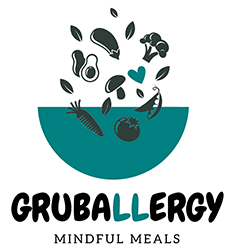It is pretty disheartening and painful for parents to see their child suffer from food allergies resulting in diarrhea, vomiting, etc. If your child too suffers from a food allergy, remember, you aren’t alone!
About eight to nine percent of children suffer from food allergies. It also includes the food allergies that a significant number of children from the Indian diaspora settled across the US and other western countries suffer.
One of the reasons for many is the sudden change in the food habits, weather and their response to Indian and local foodstuffs in the prevalent environment.
However, of course, it also depends on various factors. While some are genetic, a few are unique. So, let’s highlight common Indian food allergies in children.
4 Indian Foods Triggering Allergies in Children
Here are four foods used in Indian cuisine that can cause allergies in children.
- Wheat
Wheat has become a staple part of the Indian diet. Many cannot imagine a day without a wheat chapati. But wheat is found to trigger allergies in many children. A wheat allergy is the body’s response to one of the proteins in the grain.
Common wheat allergies in children include hives, digestive problems, rashes, anaphylaxis (in severe cases), and swelling.
- Cow Milk
This could prove as concerning as wheat allergy. Indian parents tend to feed their children cow milk while the latter are younger. But what if your child is allergic to cow milk? Concerning it is, isn’t it?
Cow milk tends to affect about two to three percent of children. Nature helps most children recover from the allergy by the time they are around three. If your child is allergic to cow milk, the best way is to avoid it and the products derived from it. It includes cheese, butter, cream, yogurt, milk powder, etc.
- Eggs
Eggs cause allergies in many children, and most of them cannot outgrow them until puberty. Common egg allergies include respiratory problems, stomach aches (a common side-effect), digestive problems, skin reactions, and rarely, anaphylaxis. Again, the best way is to avoid egg and egg-containing food products. But surprisingly, some children may not suffer from any allergy to the latter!
- Peanuts
Many children love to pick peanuts, fill them in their pockets and eat them while on the move. Peanuts are undoubtedly a healthy food to eat. But if your child is allergic to peanuts, it is better to stay away from them. Some doctors may give the child a small number of peanuts or peanut powder to desensitize them to the allergy. But that’s developing. So, it is better to consult a doctor and get the proper treatment.
Gruballergy stems from the need to enable parents to help their children combat allergies. Here, we suggest innovative recipes to help you keep your child away from allergies, yet at the same time provide the nutrition they require. Write to us at gruballergy@gmail.com for any help on recipes.


